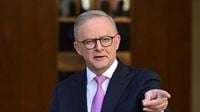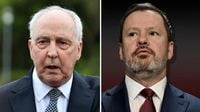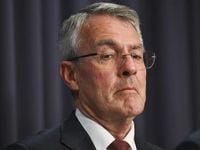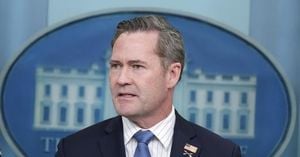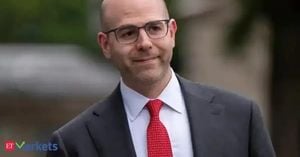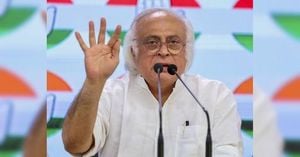Former Labor Prime Minister Paul Keating has sharply criticized the Labor Party's Right faction for their decision to remove Ed Husic from his ministerial position in a factional struggle following the party's recent electoral success. Keating's condemnation reflects a deep concern over the implications of this move not only for Husic but also for the representation of the Muslim community within the government.
In a strongly worded statement, Keating expressed his dismay over the ousting of Husic, who served as the Industry and Science Minister, along with Attorney-General Mark Dreyfus. He described the decision as an "appalling denial of Husic’s diligence and application in bringing the core and emerging technologies of the digital age to the center of Australian public policy." At 81 years old, Keating's experience and past leadership within the Labor Party lend weight to his words, as he has been a significant figure in the party's internal dynamics since the 1980s.
Keating pointed out that Husic's removal, being the only Muslim member of the cabinet, signals a troubling disregard for the support the broader Muslim community provided to the Labor Party during the recent general election. He stated, "Husic’s expulsion from the ministry proffers contempt for the measured and centrist support provided by the broader Muslim community to the Labor Party at the general election." This sentiment highlights the potential backlash the party may face from this demographic.
The reshuffle in the ministry, which is expected to be confirmed by the Labor caucus, aims to address an over-representation of members from the New South Wales Right faction, particularly in light of the recent electoral success that has shifted the balance of power within the party. Husic's departure is seen as a strategic move to maintain a proportional representation of factions across states, particularly between New South Wales and Victoria.
Prime Minister Anthony Albanese, however, has refrained from intervening in this factional dispute. In comments made to Sky News, he emphasized the importance of collective responsibility within the party, stating, "Government brings with it responsibility, and no individual is greater than the collective, and that includes myself." Albanese’s stance appears to reflect a commitment to party unity and a desire to avoid further factional conflict, despite the criticisms from within the party.
Mark Dreyfus, who has served as Attorney-General since 2022, is also being replaced in this reshuffle, with Sam Rae, a key ally of Deputy Prime Minister Richard Marles, set to take his place. Keating criticized the decision to remove Dreyfus as well, labeling it a showing of "poor judgment, unfairness and diminished respect for the contribution of others." Dreyfus's ousting, like Husic's, has been attributed to the factional maneuvering that characterizes the current political landscape within the Labor Party.
As Labor prepares for its upcoming caucus meeting, which will finalize the new frontbench team, the reshuffle has sparked discussions about the future direction of technology policy in Australia. The tech sector leaders are particularly concerned about the implications of Husic's removal, as they traditionally look to the Industry portfolio for support. The sector is calling for a more integrated approach to technology policy, emphasizing the need for a Digital Economy minister who can effectively oversee critical areas such as artificial intelligence and data management.
Despite the upheaval, Treasurer Jim Chalmers remarked on the "good problem" of having too much talent within the party, indicating that the reshuffle is part of a broader strategy to ensure that the most capable individuals are placed in key positions. He expressed confidence in the capabilities of the new appointees, including Tim Ayres and Jess Walsh, who are expected to join the frontbench.
Husic's removal from the ministry is not unprecedented; he was previously forced to step aside in 2019 to accommodate then-senator Kristina Keneally. This pattern of factional displacement raises questions about the stability of representation for diverse communities within the Labor Party, particularly as it seeks to maintain its electoral base and appeal to a wider audience.
In light of these developments, the Labor Party faces a critical juncture as it navigates the internal dynamics of power while striving to fulfill its commitments to the electorate. Keating's harsh critique serves as a reminder of the potential repercussions of factional politics, especially when it comes to representing the interests of minority communities within the government.
As the new cabinet is expected to be sworn in on May 13, 2025, the focus will be on how these changes will impact the Labor Party's governance and its relationship with various community groups. The upcoming caucus meeting is set to be pivotal, with the finalization of the frontbench likely to influence the direction of policy and party unity in the months to come.

